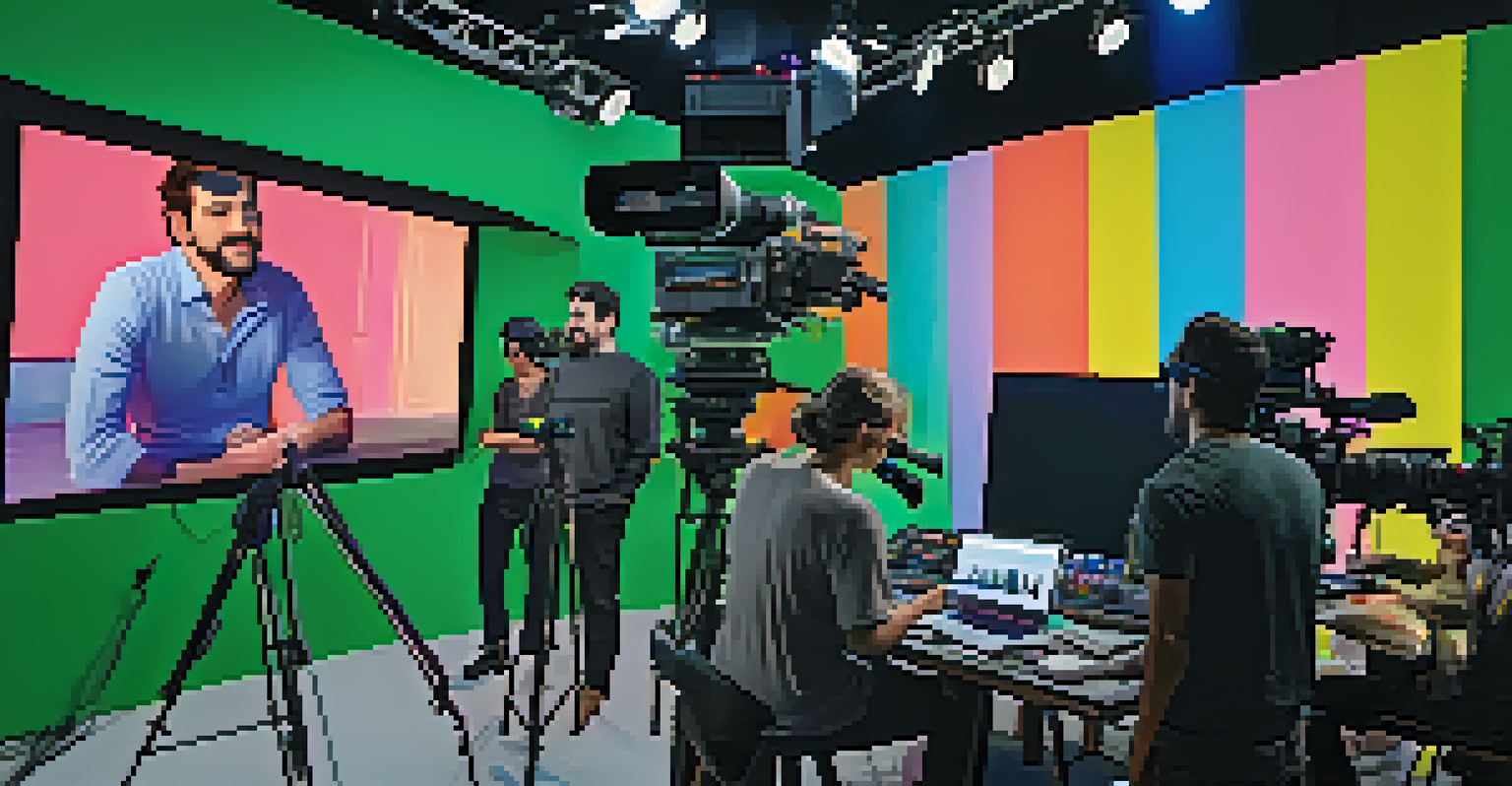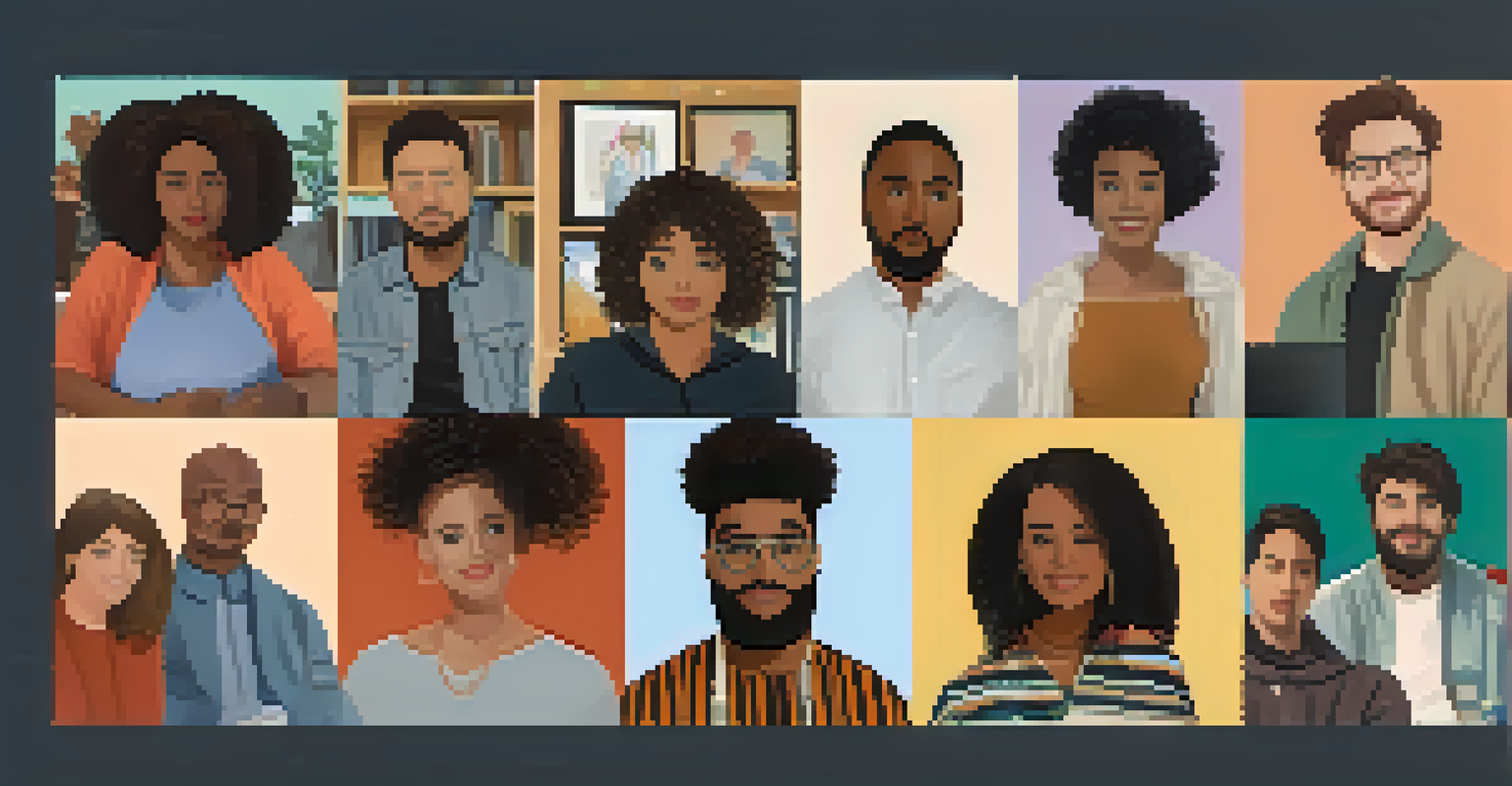How COVID-19 Shaped Hollywood: A Deep Dive into Filmmaking

The Immediate Impact of COVID-19 on Film Production
When COVID-19 hit in early 2020, Hollywood faced unprecedented shutdowns. Productions were halted, sets were abandoned, and studios were left scrambling to adapt. Filmmakers suddenly had to rethink their entire approach, from scripts to shooting schedules, as the pandemic reshaped industry norms.
The pandemic has forced us to think differently about how we create, distribute, and engage with film content.
With large gatherings restricted and safety protocols in place, many projects faced significant delays. The traditional sense of filming, which often involved large crews and crowded sets, was challenged. This situation pushed the industry to explore new methods of production, including smaller crews and remote collaborations.
In this fast-paced crisis, creativity flourished as filmmakers sought innovative ways to tell stories. Some turned to virtual filming techniques, while others embraced outdoor locations where social distancing was easier to manage. This shift not only kept the wheels turning but also inspired fresh storytelling approaches.
The Rise of Streaming Services During the Pandemic
As theaters closed their doors, streaming services like Netflix and Disney+ surged in popularity. Audiences turned to home viewing for entertainment, prompting Hollywood to rethink distribution strategies. Movies that would have traditionally graced the big screen found new life on digital platforms.

This shift meant that filmmakers had to adapt their content to suit home viewing experiences. The pacing, visuals, and even the types of stories being told began to reflect the intimate nature of watching films from home. For instance, more character-driven narratives gained traction, as they resonated well in a personal viewing setting.
COVID-19 Transformed Filmmaking
The pandemic forced Hollywood to adapt with new health protocols, smaller crews, and innovative storytelling techniques.
As a result, studios started prioritizing streaming releases, leading to a significant shift in how films were financed and marketed. The success of this model during the pandemic has led to lasting changes, with many films now being produced with streaming in mind from the very beginning.
Health and Safety Protocols: A New Era in Filmmaking
To safely resume production, Hollywood implemented strict health and safety protocols. This included regular testing, mask-wearing, and social distancing on set. Such measures became the norm, transforming the day-to-day operations of filmmaking.
In times of crisis, creativity flourishes, and the film industry is no exception.
These protocols not only ensured the safety of cast and crew but also introduced new logistical challenges. Filmmakers had to account for time spent on testing and compliance, altering traditional schedules and budgets. Despite these hurdles, the industry showed resilience and adaptability.
As a result, these health measures have prompted discussions about long-term changes in the industry. Many believe that the focus on safety will remain a priority, potentially influencing how films are produced even after the pandemic subsides.
The Shift Towards Virtual Filmmaking and Remote Collaboration
With physical gatherings restricted, the industry saw a surge in virtual filmmaking. Directors, writers, and crews began using digital tools to collaborate remotely, allowing projects to continue despite strict lockdowns. This model proved that creativity doesn't have to be confined to physical spaces.
For instance, many filmmakers turned to video conferencing platforms for script readings and production meetings. This not only saved time but also opened doors for talent across the globe to contribute to projects without the need for travel. The ease of remote collaboration has reshaped networking in Hollywood.
Streaming Services Gained Traction
With theaters closed, streaming platforms became the primary distribution method, reshaping how films are financed and marketed.
Looking forward, the prevalence of virtual filmmaking is likely to persist. It fosters inclusivity and diversity in storytelling by allowing more voices to participate regardless of location, which can lead to richer narratives and innovative ideas.
Changing Audience Behavior and Expectations
The pandemic has altered audience behavior, leading to new expectations for film and television content. Viewers are now more inclined towards stories that resonate with their experiences during these challenging times. Themes of resilience, community, and hope have surged in popularity.
Moreover, the accessibility of streaming platforms means audiences are now accustomed to instant gratification. They expect to find a diverse range of content available at their fingertips, leading filmmakers to explore various genres and storytelling methods. This shift has resulted in an influx of experimental narratives.
As filmmakers adapt to these changing preferences, we are likely to see an even greater emphasis on authenticity and relatability in future projects. This evolution not only reflects current societal sentiments but also paves the way for groundbreaking storytelling in a post-pandemic world.
Diversity and Inclusion: A Renewed Focus
The events of 2020 sparked a renewed dialogue about diversity and inclusion in Hollywood. As the industry faced scrutiny over representation both in front of and behind the camera, many filmmakers began prioritizing diverse voices in their projects. This movement was not just a trend but a necessary shift for the industry.
By amplifying underrepresented stories and perspectives, filmmakers are enriching the landscape of cinema. From hiring diverse crews to developing narratives that reflect a wider array of experiences, this focus has led to more authentic storytelling. Audiences are responding positively, seeking out content that resonates with their realities.
Diversity and Inclusion Became Key
The events of 2020 prompted a renewed focus on diversity in the industry, leading to more authentic and representative storytelling.
This commitment to diversity is likely to strengthen in the coming years, as filmmakers continue to recognize the value of inclusive narratives. The impact of this shift goes beyond representation; it fosters a richer cultural dialogue and enhances the cinematic experience for everyone.
The Future of Filmmaking in a Post-Pandemic World
As Hollywood emerges from the shadows of the pandemic, the future of filmmaking looks different than it did before. The lessons learned during this time are shaping new norms and practices that will influence how stories are told. Filmmakers are embracing change rather than reverting to old ways.
We can expect to see a blend of traditional and innovative approaches as the industry continues to evolve. From hybrid releases that combine theatrical and streaming options to a sustained focus on health and safety, the landscape of filmmaking is poised for transformation. This adaptability may lead to a new golden age of creativity.

Ultimately, the pandemic has not only tested the resilience of Hollywood but has also opened doors for new narratives and voices. As filmmakers look ahead, they carry with them the lessons learned, ensuring that the stories of tomorrow reflect the complexities of our world today.